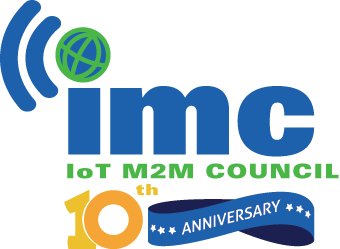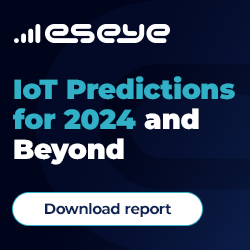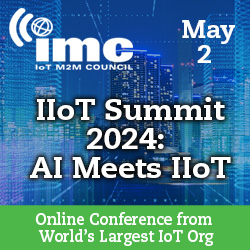Things like a canary
- November 15, 2023
- Steve Rogerson
- Digi

Steve Rogerson talks with Jayna Locke from Digi about the effects IoT technology is having in the industrial world.
Once upon a time, coal miners used to carry a caged canary with them when went they went underground. If the canary died, they knew there were toxic gases around and it was time to get out of there. Handheld gas analysers replaced the canaries and now there are sensors in the mines that send information back on not just poisonous gases but anything else they need to measure.
This is just one way the IoT is helping in industrial areas, and canaries must be celebrating everywhere. That example was given to me this week by Jayna Locke, who is a senior marketing manager and content director at Minnesota-based IoT company Digi International (www.digi.com). Other extreme examples of how the IoT is changing the industrial world include large tanks; no need to throw a rock at them to work out the level of liquid. Yes, people really used to do that.
Irrigation is another example. Before soil and water sensors, they didn’t have a way to tailor the amount of irrigation to the conditions. Today, if there is a freak rainstorm right before the watering cycle, sensors can send the data showing there is more moisture in the soil than expected and adjust accordingly.
Another example is frost fans. Farmers used to have to go out to the fields in the middle of the night to turn these fans on when frost was expected to preserve their crops. But today, with sensors, wireless communications and automation, those fans can be turned on when the conditions indicate.
“You can’t put people up lampposts or in every data point in a factory, or deep in a coal mine to gather data,” said Jayna. “You can’t afford to have humans everywhere. It is too costly, it is too error prone and it is too inefficient. But you can use IoT devices for this.”
These devices do not just help run the factory or provide an image of what is happening, but also protect the workers. Jayna told me Digi had a customer that embedded IoT technology into a wearable device to tell when that person was lifting a heavy object and if their posture was correct. They have even added a level of gamification where the worker earns points for lifting correctly.
One big change in recent times has been the growth in edge computing power. There is no longer a need to send data back to a centre where it can be interpreted, sometimes by humans, before any action can be taken.
“Edge processing will send IoT adoption into the stratosphere,” said Jayna. “You can have robots working faster than it takes humans even to detect there is a problem. By the time a human has thought of something, the robot has already fixed it.”
So, does that mean the future factory will be without humans at all? It is certainly going in that direction, but not yet. Hence the growth of what has become known as cobotics, or collaborative robots, where robots and humans work together.
“We are sentient beings, and we have skill sets that a robot can’t have,” said Jayna. Again, not yet.
The influence of IoT on the industrial world does not stop at the factory gate. The whole supply chain is now run by IoT devices, at least it seems like that. Take vegetables, for example. Not only is the farm monitored by IoT sensors for irrigation and the like, but so are the vegetables from the moment they are picked. Their temperature and moisture conditions are checked on their whole journey right the way to the grocery store or restaurant, and even when they get there.
“People used to walk round stores with a clipboard and write down the temperatures and so on,” said Jayna. “It was time consuming and mistakes were made. People used to fall ill.”
And talking of supply chains, look at Amazon. There is no way companies of that ilk could operate the way they do without IoT technology. Remember that when you are checking how many stops before your package arrives, though it still does require the delivery driver to log each stop. We’ve all had the knock on the door when the app is still showing five stops to go.
So, from the mine to the factory, from the farm to the shop, goods and processes are being monitored by IoT devices, and it is going to become even more sophisticated as the benefits of edge processing are realised. And not a single canary will be sacrificed.





